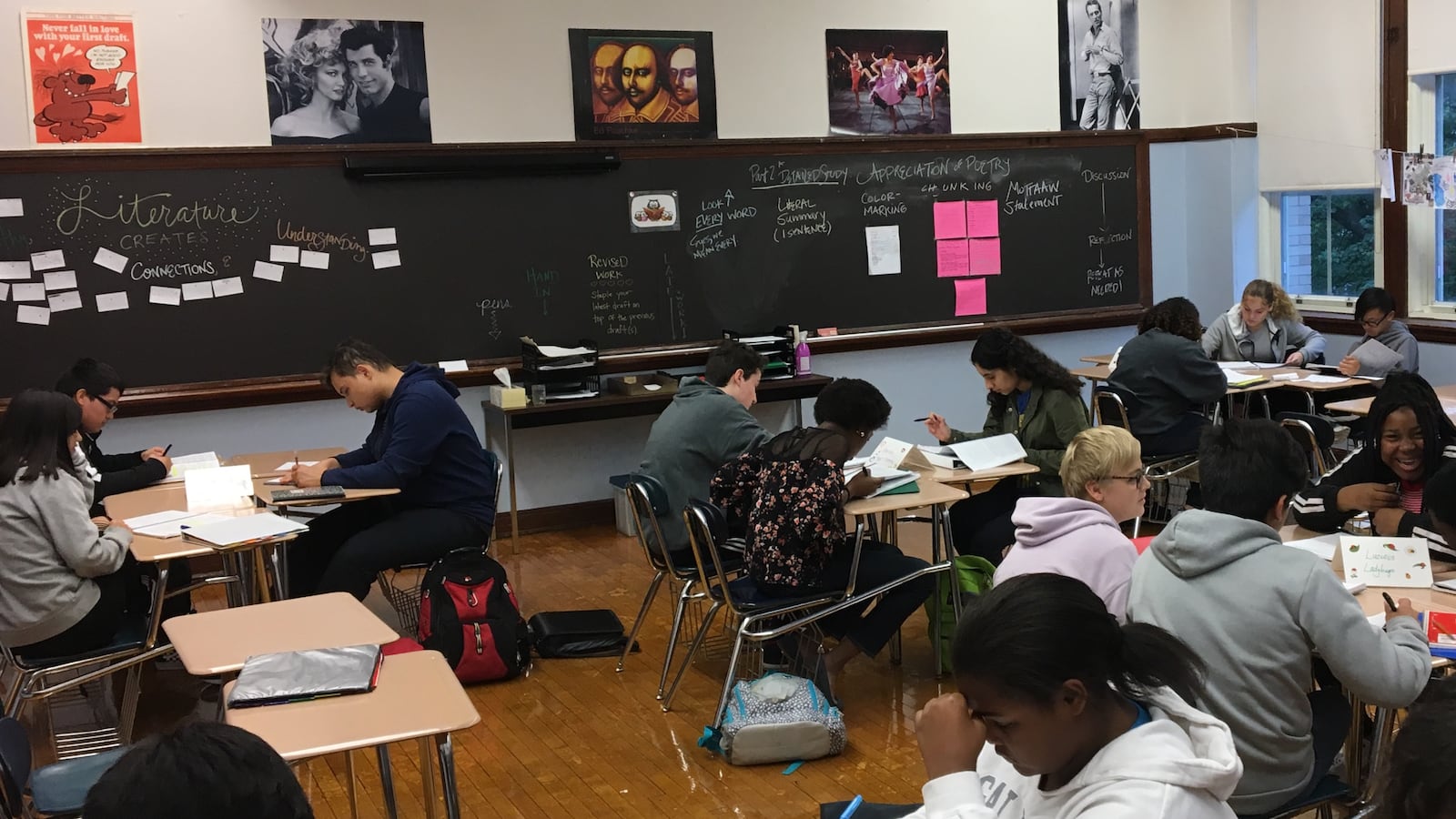As Chicago’s test scores have flattened, fewer schools are earning the city’s top rating, according to data released Friday for 2018-2019. Only 146 schools received a Level 1-plus compared to 185 the year prior.
Use our searchable table below to find your school. (Chicago also released enrollment figures on Friday. You can search for those by school, too, by clicking here.)
In all, 341 schools received one of the district’s top two ratings, a slight drop from the year prior.
The district said lagging growth on standardized tests, including at the high school level, contributed to the ratings changes.
“Over the course of five to seven years, we’ve seen continuous growth (in achievement) overall,” said the district’s chief education officer, LaTanya McDade. “But when you look at this year, we knew we were starting to see that plateau and slow growth. We recognize there are things we need to put in place to address that.”
She said Chicago is leaning on a forthcoming launch of a new $135 million curriculum initiative, and it is paying more attention to math fluency in early grades, including investments in math-related professional development for educators. “The same way we have intentional supports for literacy, we want to make sure we have those for math as well.”
Meanwhile, 138 schools were rated as low performers, meaning they were tagged in the bottom two ratings.
The district also said Friday it is adding four charters to its warning list — CICS Ellison, CICS Longwood, Learn 7, and Urban Prep’s Englewood campus — and would likely recommend three others for closure for poor performance. Charter schools facing the possibility of closure are Chicago Virtual Charter School, Chicago Collegiate, and Frazier Charter School.
Another Urban Prep campus, Urban Prep West, narrowly escaped closure this year by appealing to the state’s charter commission. Illinois will dissolve the commission next year and hand the power of appeals back to the state school board.
How city ratings work
Chicago has touted its ratings as a way to communicate school performance and help parents decide where to enroll their children. The ratings also signal which schools need more district support.
But the system has also received some criticism, as ratings can be used to justify replacing or closing schools, or opening new schools in neighborhoods where options are deemed inadequate.
The ratings span five tiers. Level 1-plus and Level 1 designate the highest-performing schools; Level 2-plus and Level 2 describe average and below-average-performing schools, respectively; and Level 3 is the lowest performance rating. Level 3 schools qualify for “intensive support,” according to the district.
Related: Chicago is still shrinking — but it holds on to its title of third-largest district in U.S.
This year, eight schools ranked a Level 3. Seven are elementary schools: Nash Elementary, Young Elementary, and Leland Elementary are on the city’s West Side; Doolittle Elementary and Mays Elementary are on the South Side; and two schools, Gale Elementary and Manierre Elementary, sit on the city’s North Side. One turnaround high school, Orr Academy High School in Humboldt Park, which is managed by the Academy for Urban School Leadership, also received a 3.
The district bases its School Quality Rating Policy on test scores, academic growth, graduation rates, attendance, and a school climate survey given annually to parents and teachers.
Starting next fall, Chicago schools will be ranked by a new rating scale that accounts for how well elementary schools keep students “on track” and for high schools’ efforts to help students complete post-graduation plans. Student attendance will still be weighted, but less so than it was before.
When the Chicago school board considered changing the ratings scale earlier this year, some called for it to be done away with altogether, arguing that ratings correlate more with socioeconomic status and race than they do school quality, and say little about what’s happening in classrooms and how kids are learning.
The state also rates schools, and it does so using a different set of metrics. To read more about state ratings and how they can trigger additional dollars for schools, click here.
Use our searchable database to find your school’s new rating and compare it to the previous year.
Corrected: An earlier version of this story misstated when the new ratings policy will go into effect.

